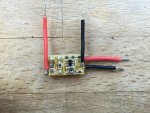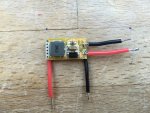jnrpop
0
- Joined
- Dec 7, 2008
- Messages
- 728
- Points
- 63
Yeah if you are seeing only at the 1 Ohm resistor, then it's okay the V=I*R is of course applies
What i thought about resistance on the post above is an R generated from the Vt/I
where the Vt = diode's Vf + 1Ω.
but it seems the formula isn't as simple as that :crackup:
ah ok,
I believe that when we use a Testload, to set the output current, the only "resistance" we are using is the 1 Ohm resistor on the Testload. So that should stay constant.
Also its why we can measure across this resistor and using V=IxR, we convert the mV reading to mA. So then i though of course if we use a Testload, then the resistance doesn't change, therefore if the Vf changes, so must the Current. The Diodes are not linear that is correct, and you can see that in the above Graphs, also in your calculated graph in post #34 astralist.
In my graphs, the "measured" Vf that drops by ~0.7V is linear, but the resulting Current reading is non-linear, from the diodes, CMIIW
Edit:
Here's both sides of the driver from Odicforce, its different to the Pictures they use on thier website:
Attachments
Last edited:





